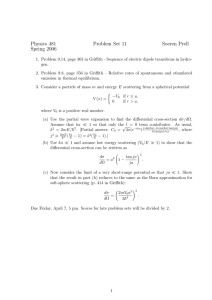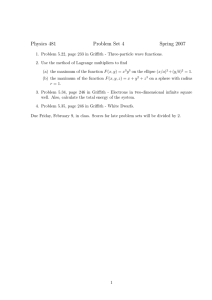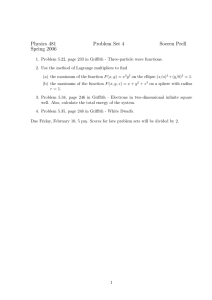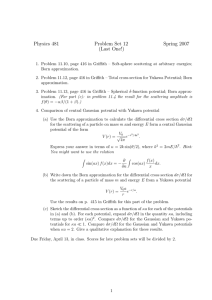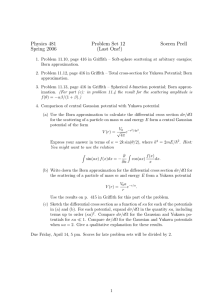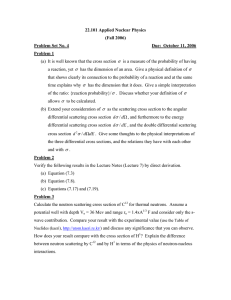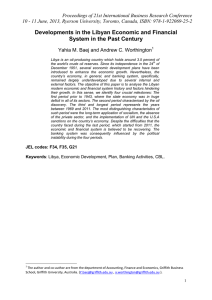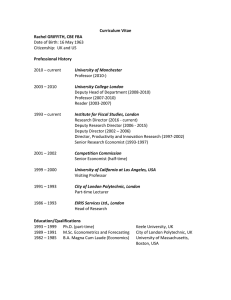Physics 481 Problem Set 11 Spring 2007
advertisement
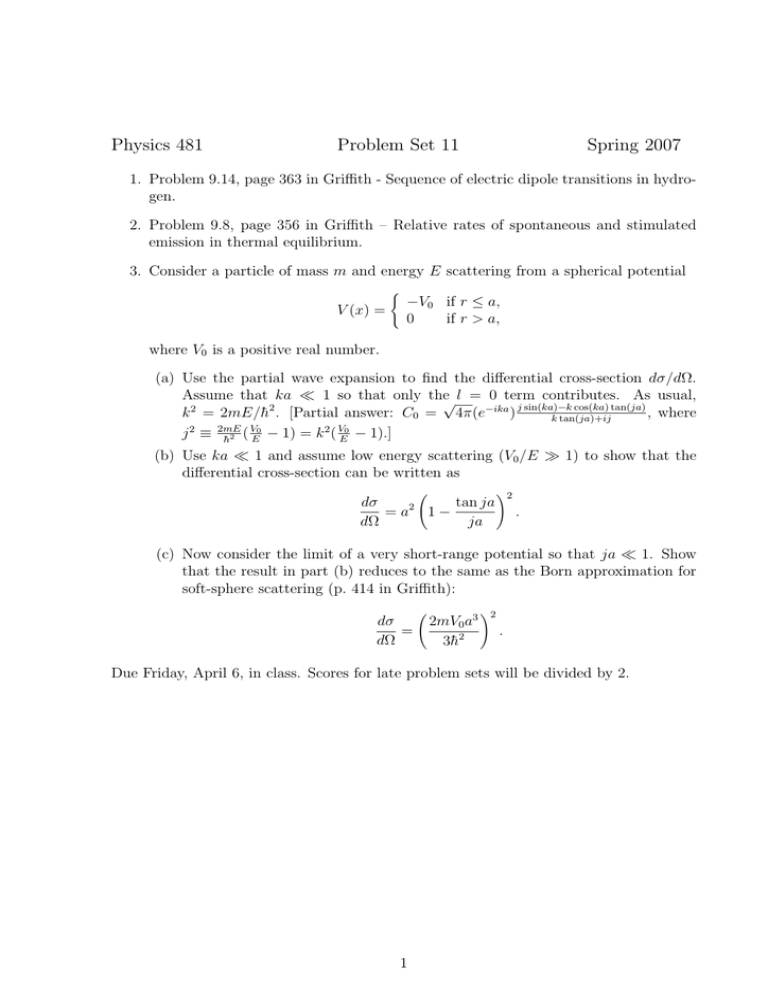
Physics 481 Problem Set 11 Spring 2007 1. Problem 9.14, page 363 in Griffith - Sequence of electric dipole transitions in hydrogen. 2. Problem 9.8, page 356 in Griffith – Relative rates of spontaneous and stimulated emission in thermal equilibrium. 3. Consider a particle of mass m and energy E scattering from a spherical potential ( V (x) = −V0 if r ≤ a, 0 if r > a, where V0 is a positive real number. (a) Use the partial wave expansion to find the differential cross-section dσ/dΩ. Assume that ka ¿ 1 so that only the√ l = 0 term contributes. As usual, cos(ka) tan(ja) k 2 = 2mE/h̄2 . [Partial answer: C0 = 4π(e−ika ) j sin(ka)−k , where k tan(ja)+ij 2mE V0 2 2 V0 j ≡ h̄2 ( E − 1) = k ( E − 1).] (b) Use ka ¿ 1 and assume low energy scattering (V0 /E À 1) to show that the differential cross-section can be written as à dσ tan ja = a2 1 − dΩ ja !2 . (c) Now consider the limit of a very short-range potential so that ja ¿ 1. Show that the result in part (b) reduces to the same as the Born approximation for soft-sphere scattering (p. 414 in Griffith): dσ = dΩ Ã 2mV0 a3 3h̄2 !2 . Due Friday, April 6, in class. Scores for late problem sets will be divided by 2. 1
